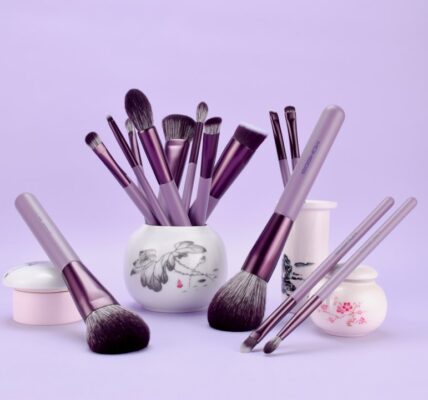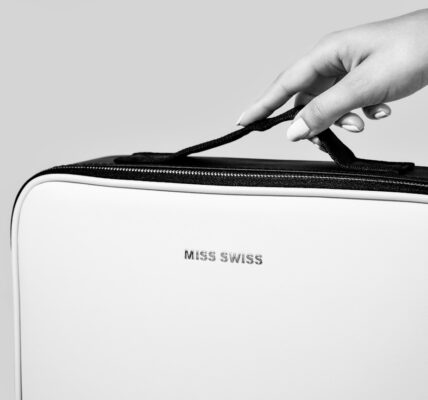In recent years, the beauty industry has experienced a significant shift towards sustainability and eco-friendliness. Consumers are increasingly aware of the environmental impact of their beauty products and are actively seeking brands that prioritize sustainability. This trend has led to the emergence of eco-friendly beauty products made with natural, organic, and ethically sourced ingredients.
The demand for environmentally friendly products spans across various categories, including skincare and makeup. Many beauty brands are taking steps to reduce their carbon footprint by implementing recyclable or biodegradable packaging. This commitment to sustainability aligns with consumer preferences for environmentally conscious choices.
As a result, an increasing number of beauty brands are adopting sustainable practices and incorporating eco-friendly initiatives into their product development and manufacturing processes. This shift towards sustainability in the beauty industry represents a long-term movement towards a more responsible and ethical approach to beauty. The rise of sustainable beauty products is driving innovation in the industry, leading to the development of new ingredients and formulations.
Natural and organic ingredients such as botanical extracts, essential oils, and plant-based alternatives to synthetic chemicals are gaining popularity in beauty products. These ingredients offer skincare benefits while having a lower environmental impact compared to synthetic counterparts. As consumer demand for sustainable products continues to grow, further innovation in eco-friendly beauty product development is expected in the future.
Key Takeaways
- Sustainable beauty products are on the rise, with a focus on eco-friendly and environmentally sustainable ingredients and packaging.
- AI and personalized beauty technology are revolutionizing skincare, offering tailored solutions for individual skin concerns and needs.
- The beauty industry is embracing diversity and representation, with a focus on inclusive products and marketing that cater to a wide range of skin tones and types.
- The intersection of wellness and beauty is becoming increasingly important, with a focus on holistic approaches that address both physical and mental well-being.
- Virtual try-on technology is shaping the future of makeup shopping, allowing consumers to virtually test products before making a purchase.
- Clean beauty is gaining popularity, with a shift towards non-toxic and natural ingredients that are safe for both the body and the environment.
- Customized beauty products are becoming more prevalent, offering tailored solutions to individual needs and preferences for a personalized beauty experience.
Tech-Driven Skincare: The Impact of AI and Personalized Beauty
Personalized Skincare with AI and Machine Learning
Advancements in technology have transformed the beauty industry, particularly in the realm of skincare. Artificial intelligence (AI) and machine learning algorithms are being used to analyze skin conditions and develop personalized skincare regimens for individual consumers. This tailored approach takes into account factors such as skin type, concerns, and environmental influences to create solutions that address specific needs.
Virtual Try-On and Augmented Reality in Beauty
Technology has also revolutionized the way we interact with beauty products. Virtual try-on tools and augmented reality (AR) applications allow consumers to virtually test out makeup products before making a purchase. This enhances the shopping experience and helps consumers make more informed decisions about their beauty purchases. Moreover, these tech-driven solutions provide valuable data about consumer preferences and behaviors, which can be used to further personalize product offerings and marketing strategies.
Innovative Beauty Devices for At-Home Treatments
The impact of AI and personalized beauty goes beyond just skincare regimens and virtual try-on tools. Technology is being used to develop innovative beauty devices that offer professional-grade treatments in the comfort of one’s home. From LED light therapy masks to microcurrent devices, these at-home beauty gadgets are becoming increasingly popular as consumers seek out convenient and effective solutions for their skincare concerns.
Inclusive Beauty: Embracing Diversity and Representation

The beauty industry has historically been criticized for its lack of diversity and representation, particularly in terms of product offerings and marketing campaigns. However, in recent years, there has been a noticeable shift towards inclusivity and embracing diversity in beauty. This includes a wider range of shade options for makeup products, as well as campaigns that feature models of different ethnicities, body types, and gender identities.
This move towards inclusivity is not only a reflection of changing societal norms but also a response to consumer demand for more diverse and representative beauty offerings. In addition to expanding shade ranges, many beauty brands are also taking steps to ensure that their products are suitable for a diverse range of skin tones and types. This includes formulating products that cater to specific skincare needs and concerns that may vary across different ethnicities.
By addressing these diverse needs, beauty brands are able to create products that are truly inclusive and accessible to a wider range of consumers. Furthermore, the push for inclusivity in beauty extends beyond just product offerings to encompass marketing and advertising efforts as well. Many brands are making a conscious effort to feature a more diverse range of models in their campaigns, as well as promoting messages of self-love and empowerment that resonate with consumers from all walks of life.
This shift towards inclusive beauty is not only a positive step towards greater representation but also a reflection of the evolving values and expectations of consumers in today’s society.
Wellness and Beauty: The Intersection of Mind, Body, and Beauty
| Category | Metrics |
|---|---|
| Mind | Stress level |
| Mind | Mental clarity |
| Body | Physical fitness |
| Body | Body mass index (BMI) |
| Beauty | Skin hydration |
| Beauty | Hair strength |
The concept of wellness has become increasingly intertwined with the beauty industry, as consumers recognize the interconnectedness of mind, body, and beauty. This holistic approach to beauty emphasizes the importance of self-care, mental well-being, and overall health as essential components of one’s beauty routine. As a result, we are seeing a growing emphasis on wellness-focused beauty products and treatments that aim to nourish both the body and the soul.
From aromatherapy-infused skincare to stress-relieving massage tools, wellness-focused beauty products are designed to provide not only physical benefits but also emotional and mental support. These products often incorporate natural ingredients and calming scents that promote relaxation and mindfulness, offering consumers a holistic approach to self-care that goes beyond just surface-level beauty concerns. In addition to wellness-focused products, many beauty brands are also incorporating wellness practices into their retail experiences by offering services such as meditation classes, yoga sessions, and personalized wellness consultations.
These initiatives aim to create a more immersive and holistic beauty experience for consumers, allowing them to address their physical and emotional well-being in addition to their cosmetic needs. The intersection of wellness and beauty is also reflected in the growing popularity of clean beauty products that prioritize non-toxic ingredients and transparent labeling. Consumers are becoming more conscious of the potential health risks associated with certain synthetic chemicals commonly found in beauty products and are seeking out cleaner alternatives that align with their wellness-focused lifestyles.
As the wellness movement continues to gain momentum, we can expect to see even more innovation in the development of beauty products that cater to the holistic well-being of consumers.
Virtual Try-On: The Future of Makeup Shopping
The rise of virtual try-on tools has transformed the way consumers shop for makeup products, offering a convenient and interactive alternative to traditional in-store shopping experiences. These virtual try-on applications use augmented reality (AR) technology to allow users to virtually test out different makeup looks in real-time using their smartphones or computers. This not only enhances the shopping experience but also helps consumers make more informed decisions about their makeup purchases.
Virtual try-on tools have become increasingly popular among beauty brands as they offer a way to engage with consumers in a digital environment while providing a personalized and interactive experience. By allowing users to experiment with different makeup looks without having to physically try on products, virtual try-on tools help bridge the gap between online and offline shopping experiences, making it easier for consumers to discover new products and trends. Furthermore, virtual try-on tools have also proven to be an effective way for beauty brands to gather valuable data about consumer preferences and behaviors.
By analyzing user interactions with virtual try-on applications, brands can gain insights into popular trends, color preferences, and product performance, which can be used to inform product development and marketing strategies. As technology continues to advance, we can expect virtual try-on tools to become even more sophisticated, offering an even more realistic and immersive makeup shopping experience for consumers.
Clean Beauty: The Shift Towards Non-Toxic and Natural Ingredients

Driving Forces Behind the Clean Beauty Movement
The shift towards clean beauty is driven by consumer demand for greater transparency and accountability from beauty brands regarding the ingredients used in their products. Many consumers are seeking out cleaner alternatives that align with their values of health and sustainability, leading them to prioritize products that are free from potentially harmful chemicals.
Sustainable Packaging Practices
In addition to ingredient transparency, clean beauty also encompasses sustainable packaging practices that minimize environmental impact. Many clean beauty brands use recyclable or biodegradable packaging materials as part of their commitment to reducing waste and promoting eco-friendliness.
A New Era for the Beauty Industry
The clean beauty movement has not only influenced product formulation but has also sparked conversations about ingredient safety standards within the beauty industry as a whole. As consumer awareness continues to grow, we can expect clean beauty principles to become increasingly integrated into mainstream beauty practices, leading to greater transparency and accountability from brands regarding the safety and sustainability of their products.
Customized Beauty: Tailoring Products to Individual Needs and Preferences
The concept of customized beauty is gaining momentum as consumers seek out personalized solutions that cater to their individual needs and preferences. From personalized skincare regimens to custom-blended makeup products, customized beauty offerings allow consumers to access tailored solutions that address their unique concerns and desires. This personalized approach not only enhances the effectiveness of beauty products but also offers a more engaging and empowering experience for consumers.
One of the key drivers behind the rise of customized beauty is advancements in technology that enable brands to analyze individual skin conditions and develop personalized skincare regimens using artificial intelligence (AI) algorithms. By taking into account factors such as skin type, concerns, and environmental influences, brands can create customized solutions that offer targeted benefits for each consumer. This personalized approach allows consumers to access skincare products that are uniquely suited to their skin, leading to more effective results.
In addition to personalized skincare regimens, customized beauty extends to makeup products as well. Many brands offer custom-blended foundation shades or lipstick colors that are tailored to match an individual’s skin tone or color preferences. This level of customization not only ensures a perfect match but also allows consumers to express their unique style through personalized makeup options.
Furthermore, customized beauty offerings also extend beyond just product formulation to encompass personalized consultations and recommendations from beauty experts. By offering tailored advice based on individual needs and preferences, brands can create a more immersive and personalized experience for consumers that goes beyond just selling products. As consumer demand for personalized solutions continues to grow, we can expect customized beauty offerings to become even more prevalent in the industry, offering consumers a truly bespoke approach to their beauty routines.
In conclusion, the beauty industry is undergoing significant transformations driven by changing consumer preferences, technological advancements, and evolving societal values. From sustainability and inclusivity to personalized solutions and clean ingredients, these trends reflect a shift towards a more conscientious and holistic approach to beauty that prioritizes individual well-being as well as environmental sustainability. As these trends continue to shape the future of the beauty industry, we can expect even more innovation in product development, retail experiences, and marketing strategies that cater to the diverse needs and values of today’s consumers.
If you’re interested in staying ahead of the beauty trends for 2024, be sure to check out the article on Glamour Garrison’s website. They have a comprehensive guide to the latest beauty trends and tips for the upcoming year. Whether you’re looking for new skincare routines, makeup techniques, or hair trends, Glamour Garrison has you covered. https://www.glamourgarrison.com/
FAQs
What are the predicted beauty trends for 2024?
The predicted beauty trends for 2024 include a focus on sustainable and eco-friendly products, a shift towards minimalist and natural makeup looks, and an emphasis on skincare as a form of self-care.
What are some sustainable beauty trends expected in 2024?
Sustainable beauty trends expected in 2024 include the use of refillable and reusable packaging, a focus on zero-waste beauty products, and an increase in the popularity of vegan and cruelty-free beauty brands.
How will technology impact beauty trends in 2024?
Technology is expected to impact beauty trends in 2024 through the rise of personalized skincare and beauty products, the use of virtual try-on tools for makeup and hair products, and the development of high-tech beauty devices for at-home use.
What are some upcoming skincare trends for 2024?
Upcoming skincare trends for 2024 include the use of adaptogenic ingredients to combat stress-related skin issues, the incorporation of probiotics and prebiotics for skin health, and the rise of clean and transparent beauty formulations.
What are the projected hair trends for 2024?
Projected hair trends for 2024 include the popularity of low-maintenance haircuts and styles, the embrace of natural textures and hair colors, and an increased focus on scalp health and hair wellness.




